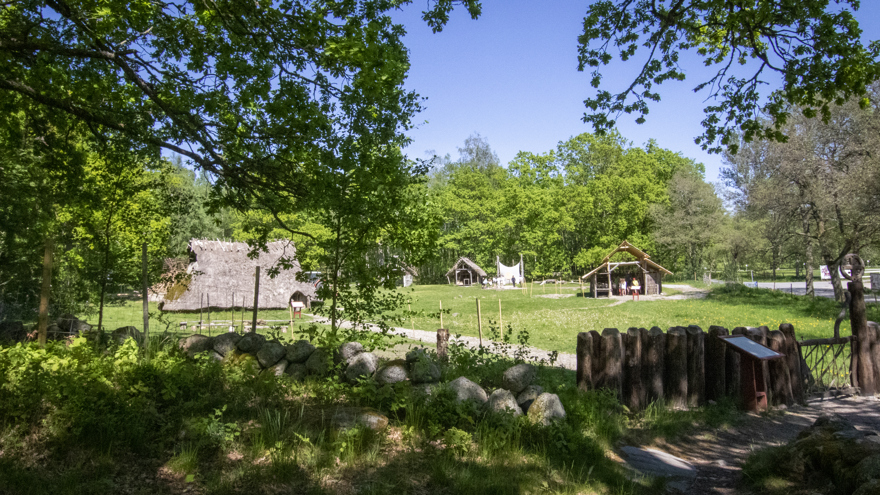Discover a different side of the Bronze Age in addition to the famous petroglyphs. While the rock carvings give us glimpses of a bygone era, the Bronze Age farm at Vitlycke Museum illustrates more about the daily life of people at that time: how they lived, their houses, fields, and their domestic animals.
Activities
You can experience Bronze Age life on the farm in our reconstructions of longhouses from the Early and Late Bronze Ages. Our workshop is open during the summer season, where you can see traditional crafts.
The sheep roam freely around the houses, while the pigs are kept in an enclosure behind the farm.
We also have cultivation projects where we grow genuine Bronze Age crops such as emmer wheat, einkorn wheat, millet, grey peas and broad beans. The farm is not only a historical reconstruction that is very much alive, but is also a centre for the museum's summer camp activities and an important part of our guided tours.
In the summer months, we arrange activities such as Bronze Age life and craft demonstrations.
For more information about dates and times of activities at the Bronze Age farm, go to:
Programme and activities at Vitlycke museum
If you would like to book a guided tour of the Bronze Age farm,
go to guided tours under the tab for visiting.
How they lived
Since houses from the Bronze Age were constructed using organic materials and they were built so long ago, only traces of them remain. It is thanks to the persistent work of archaeologists that we know what they probably looked like. This type of house is called a longhouse and they were common for several thousand years. With only minor modifications they were built from the end of the Stone Age until the end of the Iron Age. The longhouses were from 10-40 metres in length and built of whatever material was to hand. Ours are built of oak, reeds, turf, osiers and clay. A building of this size may have had a household of 10-12 people living. All the generations lived under the same roof.
The climate changed during the Late Bronze Age, and with it so did people’s way of living. It got colder and the animals were allowed into the people’s dwellings, at least the more valuable livestock. The longhouses were built in the same manner as in the Early Bronze Age but now with one half as human living-quarters and the other half for livestock. The reason for not building separate stables may have been that it was warmer for humans and animals to share the same space and pershaps because it was easier to protect the livestock against rustlers and wild animals.
Utility plants in the Bronze Age
Pollen analysis and traces of up to 100 different types of plants obtained from archaeological excavations have given us a knowledge of which plants existed and were used during the Bronze Age. Some plants were cultivated, while others were collected from the surrounding countryside for various purposes: food, medicine, textiles, dyeing. Our little plantation gives some examples of such plants, both wild and cultivated. The Nordic gene bank has helped us obtain species grown in the past.
Farm animals
During the summer you can get to know sheep and pigs on the Bronze Age farm. As well as these animals, there may have been goats, a few cows and a horse if the farmer was well off. However, there were no domesticated birds. There were fewer smaller in the Bronze Age than today, and they were less productive, but on the other hand they were more robust.
The forest and the sacrificial site
In the area behind the farm there is a forest which we are gradually transforming into a woodland area inspired by the Bronze Age. The forest of the Bronze Age was a mixed deciduous forest of linden, oak, ash, birch and hazel. More intensive farming and grazing thinned out the previously dense primeval forest, which sometime gave way to open pasture.
In the depths of the forest a lake, or sacrificial bog, provides a unique insight into the sacred sites of the Bronze Age. Near the lake there is a tree decorated with gifts in the form of bronze necklaces and from the jetty you can see the island from which images of the gods rise up.


